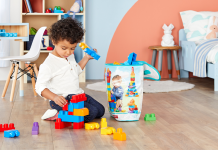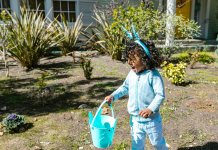Do you have butterflies in your stomach as you watch your little one get ready to start another new phase in their lives?
As parents, your child’s step up into Grade 1 is a huge milestone and can be quite daunting. While your apprehensions are very normal, it is also important to understand and believe that your little one will be fine and you will soon look back on these days with a smile. Here is some valuable info and a few helpful tips that will help ease this process for you and your little one.
What exactly is school readiness?
School readiness is a measure of how prepared a child is to succeed at school and involves two types of readiness: a readiness to learn (which is continuous) and a readiness for school (which is associated with a fixed age).
School readiness depends on emotional maturity and scholastic ability. It is split into different areas and, although these areas are separate, they do interact with and reinforce each other. Children need to be developed across five key areas.
Physical and motor development
- Gross motor – example running, skipping, standing on one leg.
- Fine motor – example comfortable using a pair of scissors, successfully doing zips and buttons, is able to use cutlery.
- Perceptual development – both visual and auditory.
- Taking care of themselves – example manages to go to the toilet by themselves.
Emotional maturity
- Independence.
- Reasonable control over emotions.
- Basic problem-solving skills.
- Confidence.
- Shows responsibility.
- Handles separation well
Establishing a routine
Establish a morning routine
Your child should follow the same sequence of activities each morning so that it becomes an automatic chain of tasks. This leads to a sense of independence on the part of your child. A suggested morning routine could include the following: wake up, breakfast, ablutions, get dressed, collect school bag and lunch, walk to the car.
Set up an evening routine
The aim of this routine is to calm your child. They can relax knowing that they are prepared for the next day at school. Ideas for this routine could include taking out the school uniform, bath time, quiet play with no screen time, story time and finally bedtime. A Grade 1 child should be in bed between 7.30pm and 8pm.
Allocate a homework space
Your child will require a place to do their homework where distractions are limited. Have specific stationery available so that they can complete the given tasks properly. Create a homework routine, with a specific time, sequence of activities to be followed and end off with packing the school suitcase. Homework in Grade 1 needs to be supervised by an adult who can create a positive environment.
Prepare a healthy snack box
Discuss nutritious options and treats with your child. Prepare a menu together. Take into consideration that these snacks will have to sustain your child for at least six hours at school.
Communication is key
When you child starts Grade 1, make sure that as parents you are on the school App and class Dojo, or whatever communication mechanism is used at the school so that you know what is happening and do not miss out on special days.
In addition to establishing a routine, parents can take time to prepare their children for this new phase in their lives by:
- Reading to their child.
- Teaching their child songs, nursery rhymes and poems.
- Take your children on excursions to, for example, museums.
- Make regular opportunities for play-dates.
- Play games so that your child starts recognising colours, numbers, and letters.
Cherish moments spent with your child and enjoy their school journey with them. Grade 1 is exciting, and memories made in this year should be filled with laughter and enjoyment.






